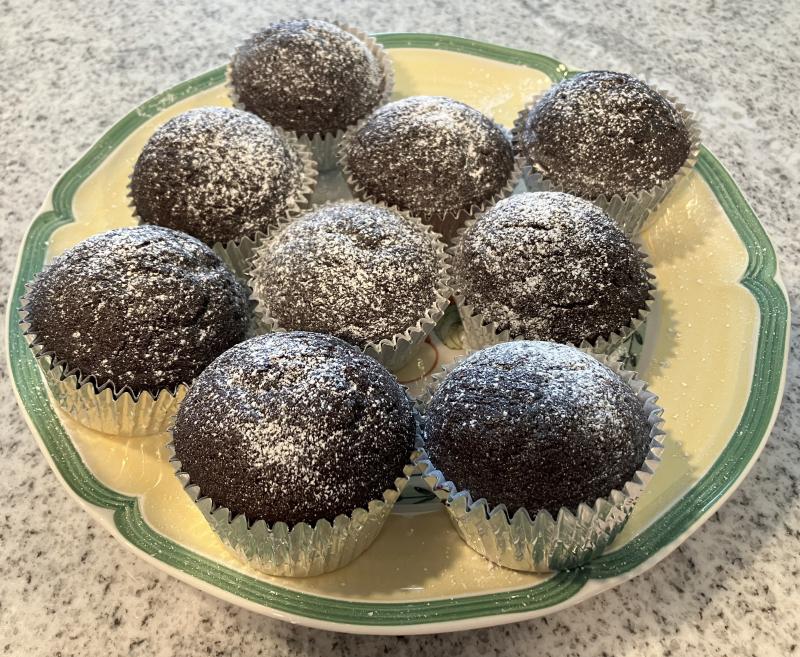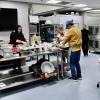Celebrate St. Patrick’s Day with a touch of the Irish
Why do we celebrate Saint Patrick’s Day? The Catholic Church established a feast day to honor St. Patrick on the anniversary of his death in the year 460 AD, and we continue the remembrance today. Although he was known as the patron saint of Ireland, there is a great deal of confusion about the man and his deeds, as well as several stories invented to add luster to his reputation.
First of all, he wasn’t Irish; he was born in Great Britain. He was captured by raiders attacking the family’s estate and taken to Ireland, where he lived in captivity for more than six years. During this time, he reported he was hearing God’s voice telling him to return to Britain. He successfully escaped, and while living in England he had another vision, this one instructing him to return to Ireland as a missionary.
He began a 15-year course of religious training, and once ordained, he was sent to Ireland to minister to Christians living there and also convert the Irish from their pagan beliefs. He approached the latter task with ingenuity, incorporating existing practices and symbols into Christian rituals. One example was adding a symbol of the sun as a circle intersecting the cross to create what we now recognize as a Celtic cross.
Patrick was never officially canonized as a saint, but more likely acclaimed by popular opinion. Contrary to lore, there were no snakes that had to be driven out of the country, although some historians believe that the notion of him ridding Ireland of snakes may be a symbolic description of removing pagan practices and replacing them with Christianity.
Most of the elements of St. Patrick’s Day celebrations were brought to the U.S. by Irish immigrants in the 19th and 20th centuries. They brought the shamrock, which was used as a symbol of Irish nationalism while under British rule. They brought their musical traditions that had been deemed unlawful under the rule of Queen Elizabeth I. And they brought their culinary traditions.
Today, Saint Patrick’s Day is filled with parades, parties, bagpipe music and green beer. One menu staple didn’t come from the Irish, but from their Jewish neighbors in large cities with sizable immigrant populations. Cabbage, an inexpensive vegetable in the Irish diet, was paired with the Jewish favorite, corned beef, which was much less costly than Irish bacon.
Typically, when making a corned beef, the liquid in which it simmers becomes greasy and foamy. If you’re planning to cook potatoes and cabbage in the same liquid, you’ll want to strain out the impurities and leave behind the rich flavor. An easy solution is to pour the liquid through a fine mesh strainer to remove the larger particles. Because I love the various spices that are in the brining mixture, I’ll usually toss a fresh handful of them into the liquid when I cook the vegetables.
For melt-in-the-mouth texture in your slices of corned beef, make sure to keep the meat completely covered with water while it cooks. It will only take a few hours to thoroughly cook it to prime tenderness; just be sure to keep the simmer very low. Here are two recipes to help you celebrate: Guinness chocolate cupcakes (better with buttercream frosting, but my hand mixer vanished in the move), and muffins with corned beef and cheese that are a great destination for your leftovers. Happy Saint Patrick’s Day!
Guinness Chocolate Cupcakes
1/2 C butter
1/2 C Guinness stout
1⁄3 C cocoa powder
1/2 C light brown sugar
1/2 t salt
1 C flour
1/2 C sugar
1/2 t baking soda
1 egg
1⁄3 C sour cream
Preheat oven to 350 F. Line a 12-cup muffin tin with paper liners; set aside. Melt the butter in a saucepan over low. Whisk in Guinness, cocoa and brown sugar until the mixture is smooth. Remove from heat and allow to cool to room temperature. Combine salt, flour, sugar and baking soda in a large mixing bowl. Pour in the cooled Guinness mixture and beat on medium for 1 minute. Add eggs and sour cream, and beat on medium until smooth, about 2 minutes. Pour the batter into the prepared pan and bake until a tester comes out clean, about 20 minutes. Dust with confectioners sugar or frost with buttercream icing.
Corned Beef & Cheese Muffins
1/4 C butter
1/2 C minced onion
2 C flour
1 T baking powder
1 t salt
1/4 t cayenne
2 eggs
1 C buttermilk
2 t Dijon mustard
1 C diced corned beef
1 C shredded sharp cheddar
Preheat oven to 375 F. Line a 12-cup muffin tin with paper liners; set aside. Melt butter in a skillet and sauté onion until soft. Combine flour, baking powder, salt and cayenne in a mixing bowl; set aside. Whisk together eggs, milk and mustard in a bowl. Stir in sautéed onion, corned beef and cheese. Pour the wet mixture into the dry mixture; stir just until moistened. Spoon batter into prepared muffin pans and bake in a preheated oven for 25-30 minutes. *Adapted from food.com.





















































